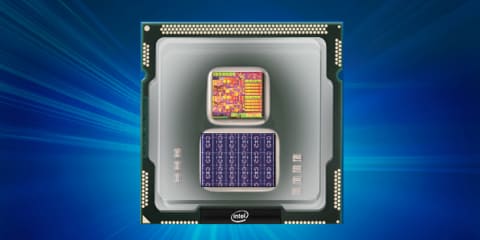The brain power of artificial intelligence continues to be pushed to a new height. Intel recently announced an artificial neural network chip Intel Loihi. That is capable of learning 1 million times faster than current chip designs.
This chip is called Intel Loihi and is the result of six years of non-stop work on a special structure that simulates the activity of the neural network in the human brain. Intel says the chip itself can learn from the many different models of environmental feedback, fully automated and does not require traditional training.
Intel Loihi Self-Organized
Thus, Intel Loihi can help the PC to self-organize and make decisions based on the feedback they receive from the environment, without having to wait for updates from the cloud.
Intel Core i7 8700K Coffee Lake reaches to 4.3GHz
Capacity of 130 million neurons
When experimenting with solving problems related to NIST’s handwriting-character recognition, the researchers found that the new chip was about 1 million times faster than the traditional chips used in artificial intelligence. In addition, the chip consumes fewer resources to perform its tasks. The Loihi chip can simulate a total of 130000 neurons and 130 million neurons, with 1000 times higher efficiency.
The outstanding features of the Intel Loihi chip include:
Polygonal neural networks support various neuronal neural structure models. And each neuron in the network is capable of interacting with thousands of other neurons.
And each neuron in the network has a self-learning system in it that automatically adapts while operating in a variety of learning environments.
Intel Introduces Skylake SP Scalable Processors
Also, this new technology is based on Intel’s 14nm process technology. In addition, it has the ability to simulate a total of 130000 neurons and 130 million neurons.
Price and Availability
Intel’s Loihi test chip will be shipped to leading universities and research centers in the field of artificial intelligence in the first half of 2018. At present, Intel has not released any information about Intel Loihi chip commercialization plan.
Loihi test chip provides a highly flexible chip learning. That can be completed in a single chip training and reasoning. This allows the machine to automatically make real-time adjustments instead of waiting for the next update of the cloud. Researchers have shown that their learning speed is 100 million times faster than other typical spiking neural networks. This comes true when solving NIST’s digital identification problems. Compared with convolution neural networks and deep learning neural networks, Loihi test chips use fewer resources on the same task.
Automotive Industry
The test chip’s self-learning ability has great potential to improve automotive and industrial applications as well as personal robots. Any application that operates automatically and continuously in unstructured environments. For example, identify the movement of a car or bicycle.
Intel also introduces new processors for laptop
We have learned that it is more than the general training system required for the general efficiency of 1000 times higher. In the first half of 2018. The Loihi test chip will be shared with leading universities and research institutes, focusing on advancing the development of artificial intelligence.
Key Features
Loihi test chip features include:
- Complete asynchronous neural morphology of the multi-core network structure, which supports many different sparse, hierarchical, cyclic neural network topology, each neuron can communicate with thousands of other neurons.
- Each neural form core includes a learning engine that can program the network parameters during operation, supporting supervision, unsupervised, enhanced, and other learning patterns.
- Manufactured by Intel’s 14-nanometer process.
- A total of 13 million neurons and 130 million synapses.
- Develop and test efficient algorithms, including path planning, constraint satisfaction, sparse coding, lexical learning, and dynamic pattern learning and adaptation.
The current Intel Xeon Phi processor, used in scientific computing, has produced some of the largest models to explain large-scale scientific problems, as well as the Movidius neural rods, which run the trained model with just one watt of power.
Source
